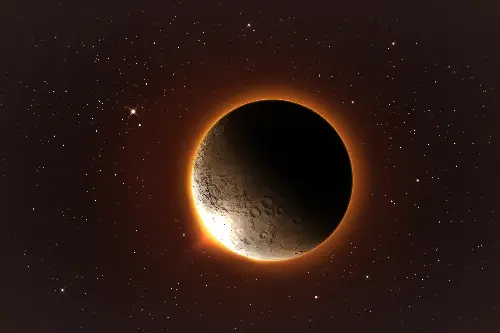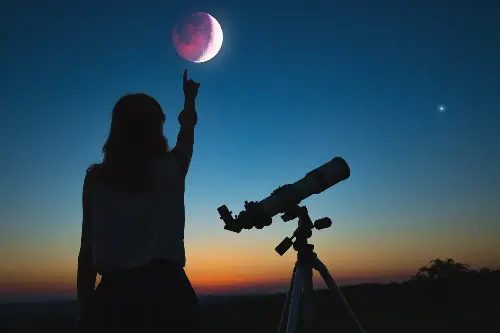Throughout history, lunar eclipses have captivated the human imagination and often been shrouded in myth and mystique. But rest assured, the secrets of these celestial events are grounded in astronomy, not superstition, and provide a spectacle that continues to fascinate stargazers worldwide. Here we explore some of the fascinating and enlightening facts about lunar eclipses that will enrich your knowledge of the night sky.

The Dance of Sun, Earth, and Moon
Lunar eclipses unfold as a celestial dance between the sun, Earth, and moon. Unlike solar eclipses, which occur when the moon passes between Earth and the sun, a lunar eclipse happens when Earth is positioned directly between the sun and the moon. This alignment causes Earth to cast a shadow over the moon, resulting in a lunar eclipse. This can only happen during a full moon, when the sun fully illuminates the moon's surface.
The Palette of the Shadowed Moon
One of the most spellbinding aspects of a lunar eclipse is the array of colours the moon can display during the event. This spectacle is the result of Rayleigh scattering, the same optical phenomenon that colours our skies blue and sunsets crimson. During an eclipse, the Earth's atmosphere filters and refracts sunlight, stripping it of its blue hues and casting a reddish glow onto the moon, a phenomenon often described as a 'Blood Moon'. The exact shade can range from a coppery tone to a deep red, depending on atmospheric conditions.
The Phases of a Lunar Eclipse
A full lunar eclipse progresses through several phases, each offering a unique viewing experience. The initial stage is the penumbral eclipse, where the moon enters the outer part of Earth's shadow, known as the penumbra, but the change in the moon's appearance is so subtle it may be barely noticeable. Following this is the partial eclipse, where a clear bite is taken out of the moon as it enters the darker umbra shadow. The totality is the climactic phase, where the moon is completely enveloped by the umbra and takes on its famous reddish hue.
The Rarity and Regularity of Eclipses
Lunar eclipses are less common than their solar counterparts but occur more frequently than you might think. On average, there are about two to five lunar eclipses per year, some of which are total eclipses. However, due to the orbit of the moon being tilted in relation to Earth's orbit around the sun, an eclipse doesn't happen every full moon. Several conditions need to align precisely for an eclipse to occur, which is why they seem rare and special.
Viewing Tips for the Avid Observer
To get the best out of a lunar eclipse, you don’t need any special equipment – just your eyes and a clear night sky. A lunar eclipse can be safely observed without the need for protective eyewear. To enhance the experience, a pair of binoculars or a telescope can bring the moon's surface details into sharper focus during the eclipse, allowing you to observe the shadow's progress across lunar craters and plains.

Global Phenomena with Local Timings
One of the advantages of a lunar eclipse over a solar eclipse is its visibility. A lunar eclipse can be seen from anywhere on the night side of the Earth. However, timing is crucial. The exact time when the eclipse takes place will depend on your location. It's always best to check local astronomy resources for precise timings in your area so that you don’t miss this awe-inspiring event.
Lunar Eclipses in Culture and Mythology
Cultural interpretations of lunar eclipses span the globe, each with its unique stories and beliefs. For instance, in ancient Mesopotamia, a lunar eclipse was considered a direct assault on the king. In many cultures, dragons or animals, such as jaguars, are believed to devour the moon during an eclipse. These myths reflect humanity's longstanding fascination and unease with these mysterious celestial events.
Scientific Revelations and Research
Lunar eclipses have also yielded significant scientific insights. For example, by carefully observing the timing of eclipses, ancient Greek astronomers were able to estimate the size of Earth's shadow, and by extension, Earth's own size relative to the moon. Even now, eclipses contribute to our understanding of Earth's atmosphere and can provide data on the changes occurring within it.
In closing, lunar eclipses are not just cosmic spectacles but celestial events rich with history, culture and scientific importance, offering a window into the mechanics of our solar system and the opportunity for communal experiences of wonder. Whether you’re an enthusiastic amateur stargazer or an experienced astronomer, the lure of a lunar eclipse is undeniable—a celestial drama in the theatre of the night sky, free for all to enjoy.
